Water damage from a leaking refrigerator? Find out why.
A sneaky cause of water damage in the home is a leaking refrigerator. These leaks are often small and slowly leave behind water damage that can go unnoticed for a long time. This is why it's usually the smallest leaks that cause the most damage! If not caught and restored properly, a water leak can cause mold to grow within 48 hours. The level of mold growth after a few weeks' time means the building materials behind and underneath the fridge and potentially the surrounding kitchen cabinets will need to be removed and remediated. The good news is, a refrigerator leak is largely preventable with regular inspection and routine maintenance. Follow these expert tips to help prevent water damage from fridge leaks.
What causes refrigerator leaks?
- A defrost drain blocked with food and debris.
- A blockage can lead to ice build-up and water backup. Flush the drain with warm water or use a pipe cleaner to clear the clog. Clean the check valve of any debris.
- A pipe break in the water supply line.
- Regularly check the water supply line for cracks and kinks. These water lines are typically thin, plastic tubing that is highly susceptible to breakage. If the water from the dispenser is coming out slowly, check the hose for a pin-hole-sized leak and replace as needed.
- Ice build-up in the water line or the freezer.
- If the ice build-up is in the freezer, leave the unit unplugged until the blockage defrosts.
- Don't leave the freezer door open often. This raises the humidity level in the freezer and causes frost to develop.
- Check the seal on the doors to make sure they are not dry and cracked. Replace as needed. Also, check to see if the fridge and freezer doors close on their own. If they need a push, the seal is not the best and will allow warm air in.
- Don't overstuff the freezer or block the vents preventing airflow.
- The refrigerator is not at the proper level.
- The front of the fridge should be 1/4 inch lower than the back so that the coolant can flow freely. If not, the fridge works harder and condensation is created on the coils, causing water to drip and pool.
- A crack in the drain pan.
- Check the drain pan during your regular inspection. The pan is located at the bottom of the refrigerator nearest to the floor. Some water in the pan is normal and part of the refrigerant process. The pan catches any water from the coils that do not evaporate. If there are any cracks or the drip pan is close to overflowing- you'll want to take action to prevent water damage on the floor.
Water damage from a slow leak that goes unnoticed can cause significant damage. Here are some photos of a few water damage restoration jobs we have completed where the homeowner experienced a refrigerator leak.
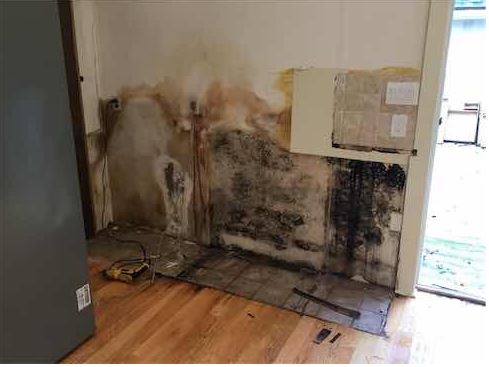
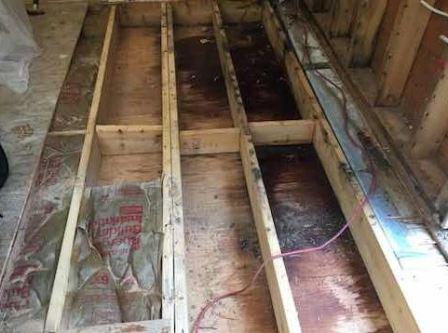

Water damage from a leak in the refrigerator affected the surrounding cabinets and flooring of this home. Technicians removed the wet materials in order to dry the walls and floors. We also sealed the areas with an anti-microbial application to make sure no new mold forms.
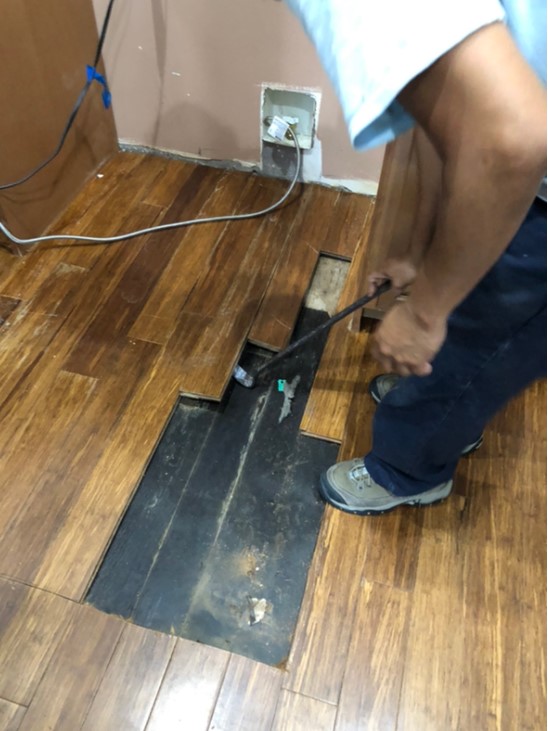
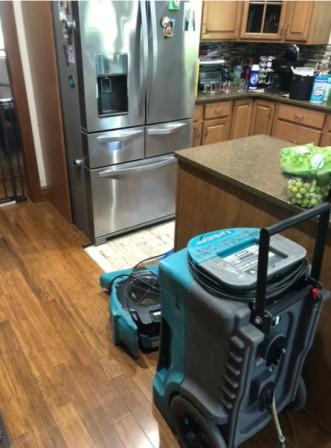
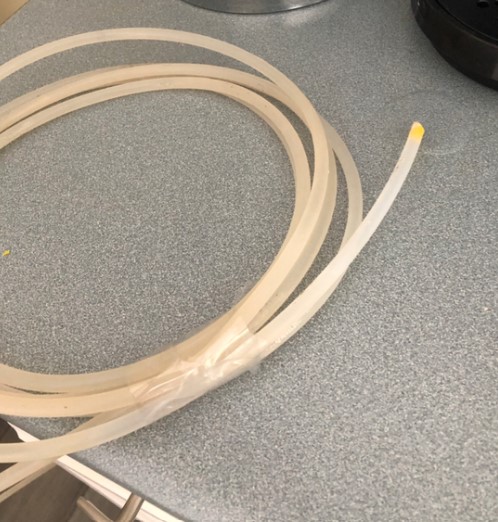
Another water damage restoration job from a refrigerator leak caused by a small hole in the ice maker water line.
Add these maintenance tasks to your housekeeping chores to prevent any long-term water damage. But if you do find yourself in need of water damage restoration in your kitchen, we can help. Our team is available 24/7/365 for all your disaster restoration needs. Contact us or visit our services page for more information.

